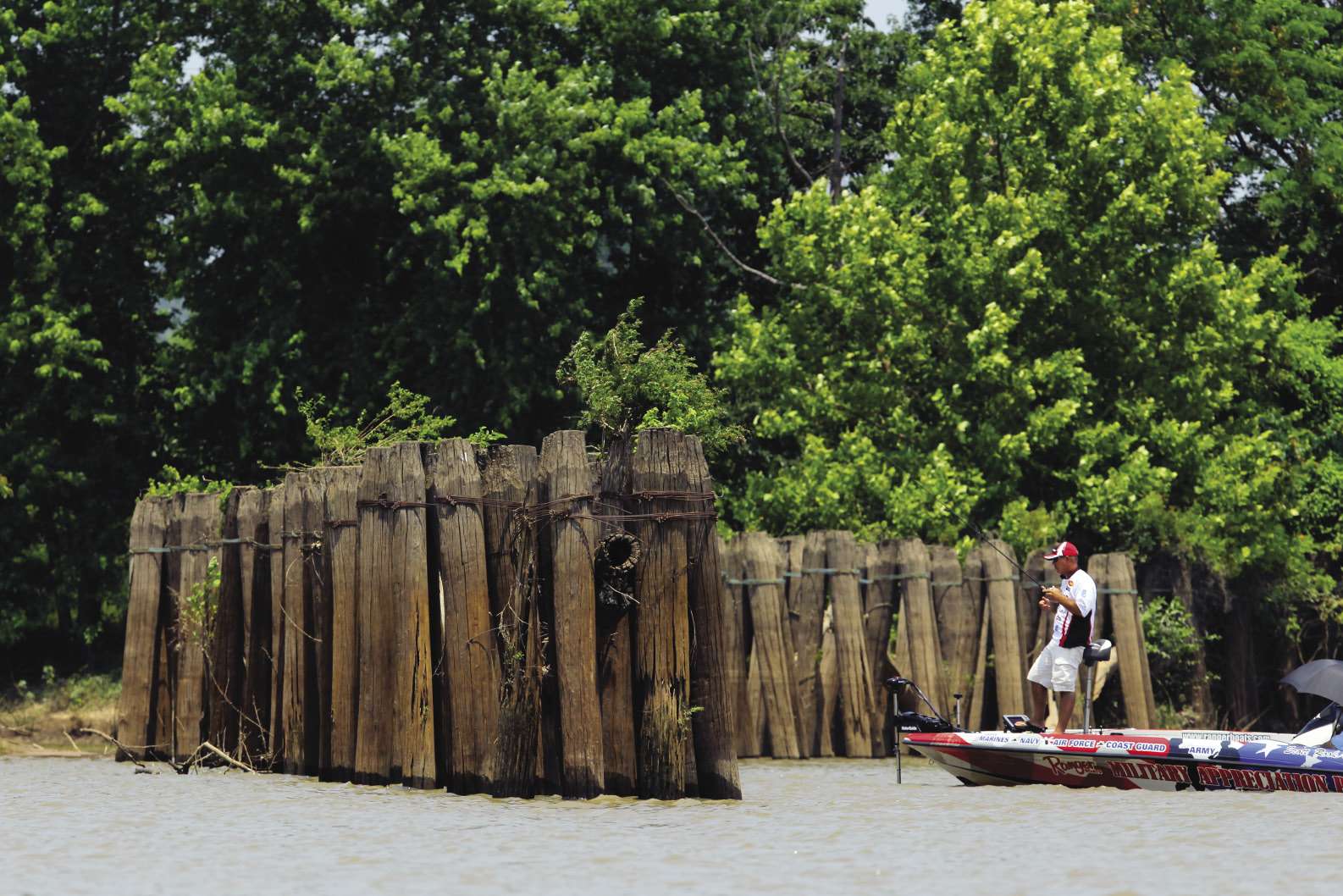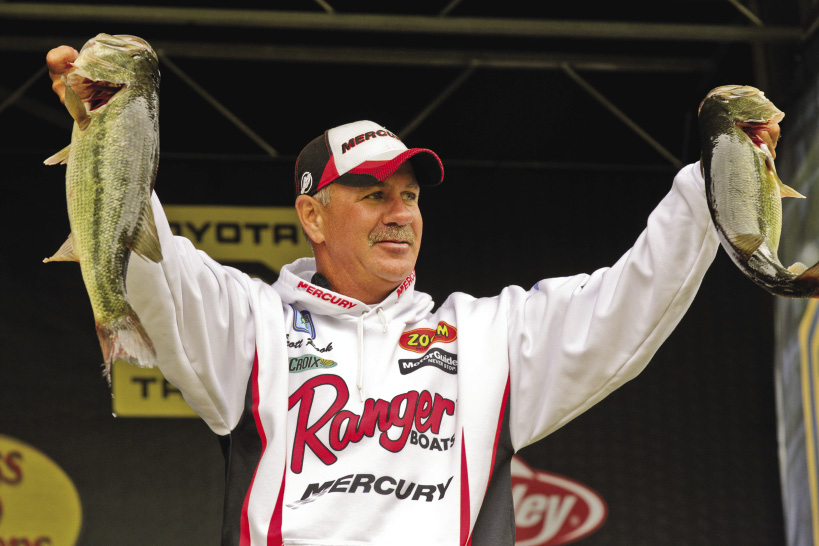
It comes as no surprise that Scott Rook is sweet on the Arkansas River, which winds southeast past Ft. Smith, Little Rock and Pine Bluff on its way to the Mississippi. Rook was born and raised in Little Rock and is content to stay put.
“I cut my teeth on the Arkansas River,” Rook says. “I’ve done more bass fishing there than anywhere else.”
SPRING
The Mills Pool, southeast of Pine Bluff, is the most productive stretch of water on the Arkansas River, Rook claims. In the spring, he fishes the pool’s two large backwater areas, 538-acre Coal Pile and 2,500-acre Merrisach Lake.
“Merrisach Lake has a lot of shallow milfoil, stumps and old timber,” Rook says.
When the water warms to the low 50s in Merrisach, Rook retrieves a chartreuse lipless crankbait slowly over submerged grass.
“When the bait catches the grass, I pull it loose and let it shimmy down for a moment,” Rook says. “I catch a lot of bass doing that.”
In Coal Pile, Rook fishes the many green cypress trees. His go-to lure is a 3/8-ounce Jewel J Lock Flipping Jig tipped with a Zoom Chunk. A hot color is green pumpkin with a touch of orange or blue.
Rook pitches the jig to the cypress trees with a St. Croix heavy action flippin’ rod and 20-pound Trilene 100 Percent Fluorocarbon line. Many fishermen overlook the bass because they pitch their baits only into the shade of the cypress trees.
“Early in the spring, the bass often prefer the warmer, sunny side of the tree,” Rook says.
Rook keeps a firm grip on his flippin’ stick when the bass commence spawning. However, he switches to a 6-inch Texas rigged blueberry lizard with a 1/8- or 1/4-ounce bullet sinker. Because the water is usually too stained for sight fishing, Rook pitches the lizard next to any cover he finds on shallow spawning flats.
SUMMER
“I do better on the main river in the summer,” Rook says. “That’s when bass chase baitfish around wing dams and sandbars in the current.”
From May through August, Rook fishes no deeper than 5 feet. Whenever a current is present, he heads for wing dams that jut into the river. These riprap structures direct the current flow and reduce sedimentation in the main river channel.
 The bass might be anywhere on a wing dam, but they usually feed along its upstream face and the tip of its point. Rook entices hard strikes by retrieving a firetiger square bill crankbait along the front and back of the wing dam and across its point.
The bass might be anywhere on a wing dam, but they usually feed along its upstream face and the tip of its point. Rook entices hard strikes by retrieving a firetiger square bill crankbait along the front and back of the wing dam and across its point.
The peak action on sandbars happens in late summer. These structures typically form between wing dams and have a shallow point that drops into deep water. The bass push baitfish up onto the sandbar’s point, where they can eat them more easily.
Sandbar bass are suckers for a small popper, such as XCalibur’s Zell Pop, Rook advises. If the bass aren’t willing to come up for a topwater bait, Rook drags a Carolina rigged Zoom Brush Hog over the sandbar. A 3/4-ounce tungsten sinker and a 24- to 30-inch leader work well here.
“You usually catch only one or two bass from a sandbar or wing dam,” Rook says. “But, once you figure out what the bass want, you can run that pattern up and down the whole river.”
FALL
When the water chills in autumn, shad suspend near the surface. The bass rise with them. It’s common then to see pods of shad rippling and popping the surface on the main river and in the backwaters.
“The bass spread out at that time of year, so you have to check everything,” Rook says. “The main thing is that baitfish have to be present.”
Crankbaits and poppers continue to produce on the main river in the fall. Rook also adds a 3/8-ounce War Eagle spinnerbait to his arsenal. A white head and skirt with a gold Indiana blade trailing a nickel Colorado blade is a proven combination.
Although Rook has won many tournaments by fishing the river’s wing dams in the fall, he has also scored big in the backwaters. Bass in the backwaters use windfalls, stumps, brush and any other shallow cover as an ambush point.
Rook ambushes the bass by casting a spinnerbait and a square bill crankbait to this cover. Pitching a jig or Texas rigged creature bait nabs bass that aren’t willing to chase.
WINTER
Rook claims that you can catch winter bass on the Arkansas River by fishing wing dams, creek mouths and revetments. A revetment is a riprap bank that runs parallel to the river. Unlike a wing dam, which is brushed by the current, a revetment usually borders slack water.
A square bill crankbait works well in the winter. If the water is clear, a jerkbait also dupes the bass, Rook says.
Visit Bassmaster.com/Arkansas for more on Arkansas bass fishing.





